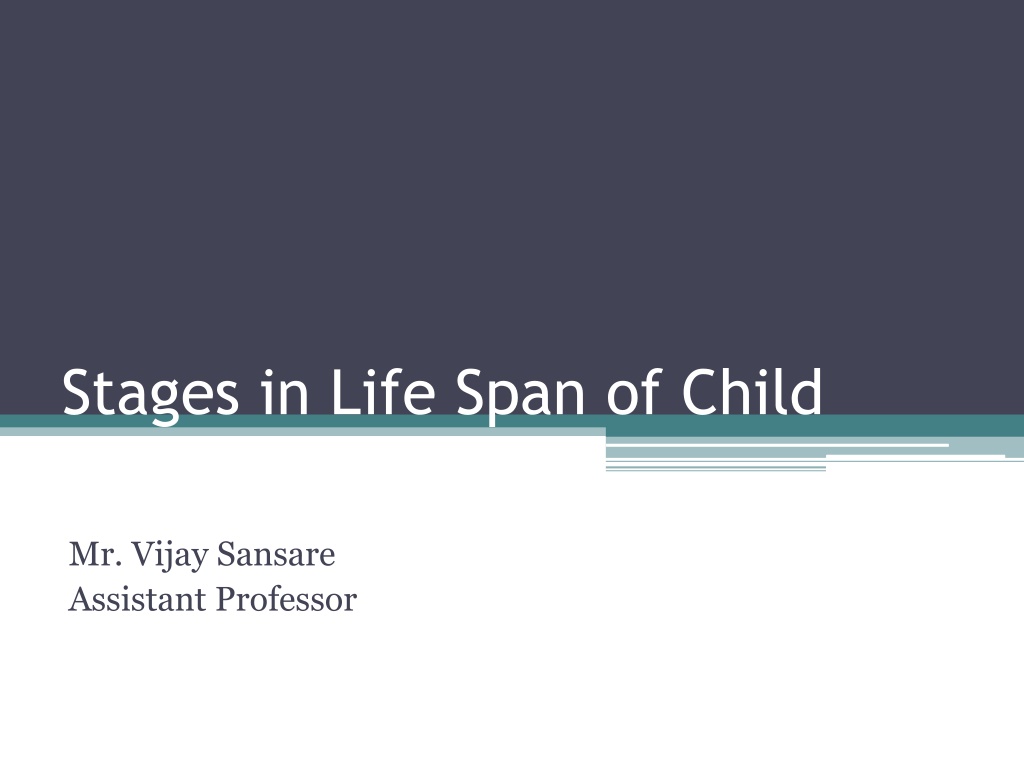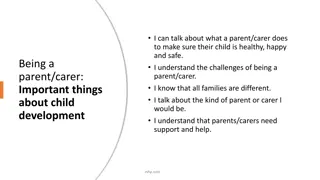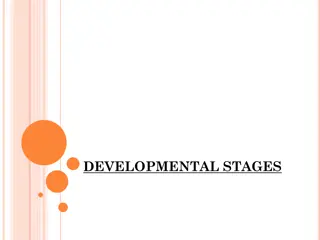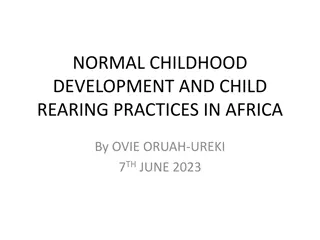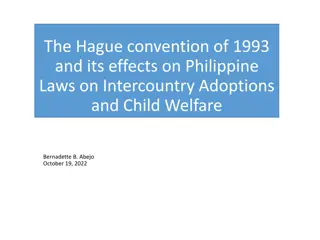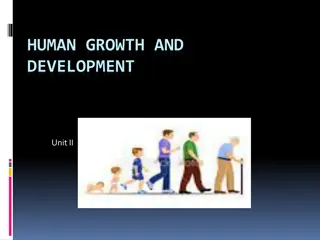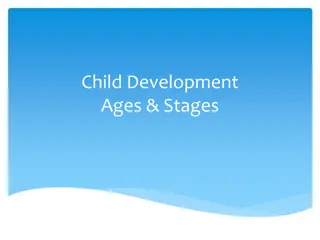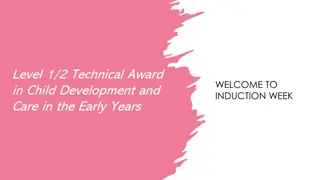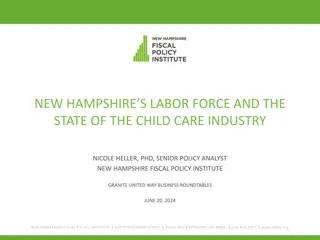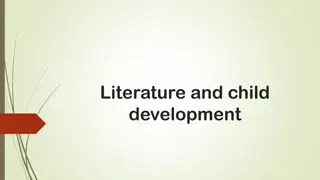Understanding the Stages of Child Development by Mr. Vijay Sansare, Assistant Professor
Child development can be described through various stages in life span, including pre-natal and post-natal periods. Mr. Vijay Sansare, an Assistant Professor, outlines the progression of children as they grow older, highlighting key characteristics and behaviors. Factors influencing pre-natal development, such as maternal nutrition and external hazards, are explored. Post-natal development is divided into stages like neo-natal, infancy, childhood, and adolescence, each marked by distinct milestones and growth patterns.
Download Presentation

Please find below an Image/Link to download the presentation.
The content on the website is provided AS IS for your information and personal use only. It may not be sold, licensed, or shared on other websites without obtaining consent from the author. Download presentation by click this link. If you encounter any issues during the download, it is possible that the publisher has removed the file from their server.
E N D
Presentation Transcript
Stages in Life Span of Child Mr. Vijay Sansare Assistant Professor
Stages in Life Span of Child Development can be describe in different ways. The most common way of describing it is according to chronological age. The outline indicate how children learn new and more complex tasks as they grow older. Each stage has certain characteristics and certain behaviors or traits stand out with more conspicuously than others.
Stages in Life Span of Child The entire period of development can is divided into the following stages; These stages are approximately and suggestive regarded as merely A. Pre-natal period B. Post-natal period
A. Pre-natal Period Refers to the development from conception to birth It is divided into 3 sub phases Period of ovum time of fertilization upto the end of 2 week of life Period of embryo extend from 3rdweek to the second lunar month Ectoderm outer layer Mesoderm middle layer e.g. skeleton Endoderm inner layer e.g. lungs, liver Period of foetus extends end of second lunar up to birth
Factors affecting Pre-natal Period Maternal nutrition Vitamin deficiency R-h-incompatibility - protein on red blood cells Parental age Maternal emotions drugs X-Rays and Radium Alcohol Infection and chronic disease of mother syphilis (sexually transmitted infection) Birth hazards failure to breathe easily
B. Post-Natal Development It begins when child is into the world after 280 days in mother s womb Neo-natal stage (birth to 2 weeks) Infancy - / (2 weeks to 1 year) Babyhood (1 year to 2 years) Childhood (3 years to 12 years) Early childhood (3 6 years) Late childhood (6 12 year) Adolescence (13 years onwards)
1. Neo-natal stage (birth to 2 weeks) It is beginning of life outside mother s womb to the end of second week Simply learn to adjust to his new environment, growth is almost nil
1. Neo-natal stage (birth to 2 weeks) Characteristics Many reflexes like rooting, grasping, sucking etc. It is sensitive to visual, auditory, thermal pressure and pain stimuli Higher rate of responding to certain types of visual pattern is observed Displays considerable attentiveness, smiling and crying behaviour variations in sleeping,
2. Infancy (2 weeks to end of first year) Child learns to adjust to the new environment around him It also called as oral stage as it concerned about feeding, uses the mouth to examine objects, gets satisfaction from activities like sucking a thumb or nipple
2. Infancy (2 weeks to end of first year) Sleeping, eating & exercise are major business of infants Ericson states that is crucial time for healthy personality, namely and the sense of trust Child Feels that arising needs will be met
2. Infancy (2 weeks to end of first year) Characteristics Baby s physical growth and development are very rapid Most of the time in sleeping (18 22 hours) The sense organs develop smell, taste etc. First tooth appears around the 5th& 6thmonth All normal babies begin to babble around the age
3. Babyhood (1 2 year) Dramatic changes take place as the child becomes helpless and more independent They also learn that they cannot have their own ways all the time The process of socialization starts
3. Babyhood (1 2 year) Characteristics Physical growth and development slows down Rapid acquisition of balance and skill Mental growth and development progress rapidly Learn to interpret what they see Active exploration and manipulation Learning leads to start socialization Learns to speak incomplete sentences
4. Childhood (03 12 year) Extremely impressionable age, where learnt things in early age will be carried out in adulthood A. Early Childhood (3-6 years) Period of consolidation The development of girls is faster than boys at this stage Imitate elders in every way he can Food strikes negativism or temper-tantrums Conscience begins to function as an inner censor of his behaviour
4. Childhood (03 12 year) A. Early Childhood (3-6 years) characteristics Physical development continues at a slower rate - this leads to decrease in appetite temporarily Muscular coordination in increased The bones develop in size and shape The maturation of nervous system Seeks to gain control over hi environment Increase in vocabulary can express his thoughts Makes social adjustment Self dependent and learns - I, ME and YOU
4. Childhood (03 12 year) B. Late Childhood (06-12 years) The child gradually moves towards mastery of aspects of formal thought Girls grows faster rate from 9 years onward Becomes curious to accumulate large amount knowledge and information It is also known as gang age Consolidates previous forward Children are more on their own More efficient in self care and precautions learning and carries
4. Childhood (03 12 year) B. Late Childhood (06-12 years) characteristics Major increase in size of body Major development is building up friends with peer team spirit Maturity occurs The self concept emerges in children Shows interest in comics, movies and television The development hobbies and interest takes place Control over mind and emotional stability
5. Adolescence (13 year onwards) Age of storm The five leading characteristics of adolescence are biological growth and development, an undefined status, increased decision making, increased pressures, and the search for self.
Reference Sharma P & Gairola L (1990) Fundamentals of Child Development and Child Care, Stering Publication Private Ltd. L-10, Green Park Extension, New Delhi - 16
